Note
Hi How do you get that vedic astrology knowledge any books??
i read Bhragu Samhita in simplified version and I listen to astrologers in Youtube mostly. Some from Mahabharat texts also
4 notes
·
View notes
Note
Hii what character In knb do ya think i have something in Common based on my chart?

First of all, I am no astrologer... and secondly you should not share such personal detail about birthchart in internet unless you know the person. I am guilty of this crime and I was adviced to do such. Trust me!
Now, as the preaching is over, let's jump.
Luminary wise, I would say you are a bit like Hyuuga: critical, perfectionist and ambitious. It's hard to sway you as you have your moon exalted in 5th house! Yay. As 5th house is alsi house of creativity, romance and social circle I guess you are also popular amongst the opposite sex. You have Rahu conjunct with moon, so sometimes your mind will trouble you, but with strong will, you can overcome it
Ascendant Wise: Capricorn, (I can't think of anyone in KNB with Cap ascendant) but since you are Dhanistha ascendant you have a strong, unwavering attitude. Dhanistha energy is merciful yet competitive!
Sun wise: Congos, you have the same sun sign as Riko and Kuroko (constellation wise too) you are crafty in your own way and kimd of unpredictable. Since it is a second house sun, place of fixed assets and values and Satabhisha is a Rahu ruled constellation, your values would not be easily figured out. It would be hard to predict your moves.
So I would say, you have values like Riko/Kuroko and Mind like Hyuuga.
#knb request#kuroko no basket#kiseki no sedai#someone actually sent me birthchart to analyse#dont do it guys its dangerous#internet is a scary place
6 notes
·
View notes
Note
Can you make an astrology analysis for lelouch vi britannia ?
Sorry, I don't know about them and I don't usually do stuff which I don't know
1 note
·
View note
Note
If its okay with you can you make a levi ackerman post please?
i am really sorry I didn't watch Attack of Titans, so I cannot do justice to him! but thanks for asking
1 note
·
View note
Note
i'm honestly so thrilled to have found your wonderful blog out of sheer whim! i was watching jap VA vids on yt, switched to pinterest to look for haikyuu fan art, then looked up knb analyses on tumblr cuz i was feeling nostalgic and curious for content. knb is kind of a dead fandom as u've said before but it warms me to the core that people sometimes still come back to it cuz it made a lasting impression on them and that new fans are still discovering the anime and appreciating how great it is. looking forward to future posts!^^
Thanks dude! Means a lot when people appreciate my posts
2 notes
·
View notes
Text
Anime Analysis-Chapter 1: How Aries and it’s ideas can be explored by these anime Characters
Since my last couple of astrology posts got quite a bit of love, I decided to make a thing of it. So the cycle will end with Pisces if everything goes well. I will be focusing on only a couple of characters so that it doesn’t jar the minds of you guys. I hope you’ll like it.
There are few things one needs to remember. I lean towards the Vedic astrology analysis because I feel it is lot more in depth and adds a lot of psychology into it, and it actually gives accurate analysis on how people from the same Zodiacs behave vastly different. That been aside, let’s jump into the main thing:
Aries! what a sign. It is the start of the Zodiac cycle, number 1 Sign and harbinger of the Spring and youth. However in Media and social media Aries is always depicted as headstrong, stubborn and short-tempered time bomb, but it is so much more than that. There are a few fundaments to add: Aries’ rulership is Mars, which also rules Scorpio and gets Exalted in Capricorn. Aries itself is the Exaltation point on sun, and debilitation point of Saturn. It is a Cardinal Sign thus it is not fixed in nature. It is the part of the Dharma Trikona signs: (Fire signs that signifies the true purpose of your life) along with Leo and Sagitarrius.
These particular characters has been chosen by me because they not only break stereotypes of Aries in one way or the other but also reconfirm age-old astrophilosophic theory about someone born under a particular sign. Here I will also provide the Sun and moon sign to compare how they appear and how their minds work.
Handa Seishuu: Barakamon (15th April) (Aries Asc, Sun, Moon Mercury conjunct in Aries) (Double sun influenced, afflicted) (Mars debilitated)

Handa has a very good chart for artistic ability, but there are some added twists to it. Handa has many similarities with the other Aries native Chiyo Sakura (whom I shall discuss later). He is sensitive, critical, self searching on the positive side, and he is irascible and petty on the other side. He has his sun and Moon placed in the Krittika Constellation or The constellation of the Cutter (Pleides). Since Krittika constellation is ruled by the Sun, he is considered doubly influenced with sun. Krittika constellation is the birthplace of Sun and exaltation point of moon (when it is in the Taurus belt) and it usually gives the native exceptional leadership qualities, critical and perfectionist attitude, sharp wit and sarcastic speech, soft heart and thus they become sensitive to the core.
But neither of them are quite associated with Handa now, does it? that is because when Sun and Moon are placed so close to each other in a same Constellation, it is considered Eclipsed in astrology. This means the native would get neither the benefits of Sun nor the Moon. Thus he loses a great deal of the charismatic leadership edge that is considered “alpha” in society. But we also have to remember that this conjunction is placed over the ascendant, which is the safe haven for debilitated or afflicted planets: it does not totally rob the native of the good results of the said planets. Sun is associated with Father, workplace, body, leadership, fame and Moon is associated with Mother, home environment, mind and nurturing: Handa is blessed on both sides. He almost easily transited into the profession his father followed, and he was brought up with least struggle. Both mom and dad protected him from harm and brought up a very sensitive guy who almost never faced any consequences for his naivete. The eclipse can also cause affliction in confidence and disturbance in mind which Handa has throughout his life, but it does not totally rob him of fame. He was famous in his world of calligraphy, he was begrudgingly famous as “sensei” in the island he lived during his exile, and in the Spinoff “Handa-kun” his afflicted mind made him think everyone hates him in the school but in reality he was the most popular boy around. That is the merit of Aries Sun. Another planet which is conjunct is the Mercury which encourages his to experiment from his traditional path and open avenues he never ventured before. Mercury is the significator of intelligece, mutability, children or kids, and this happened when Handa meets and interracts with Naru. Throughout his exile he constantly experiments with the brush strokes and his subject matter regress from grand to mundane, while his technique started to mutate from normal “textbook style” to more experimental.
Aries ascendants have beautiful looks and they are somewhat unaware of their attraction and totally ignorant of any romantic or sexual desires. While making bath, Handa said to the Village chief “I’ll probably die alone”, and in Handa-kun he was blissfully unaware of the crush-brigade he had behind his back. The core of Handa’s character is his senitivity and critical nature. He is never satisfied with his process, even though the others say it is good. The first day when Handa writes in the village, he exhausted himself by overworking but throughout the process he was laughing on his own: his satisfaction is not in the result but in the constant process of effort and perfecting.
However, there is one major flaw in Handa which sets the whole story into motion: his irascibility. he punches a old man in Calligraphy exhibition who criticised his work. It could be Ariesian ego, but it is not. It is a sign of debilitated Mars. Handa has debilitated mars in cancer which makes him lash out without dignity and with very little provocation. This makes him a laughing stock in many situation in both his society and in the village, and he is sometimes seen “assaulted” by the children in the village. He is also seen as petty when he has his lunch with Hiro where he bashes Hiro’s Cucumber-Miso rice, while defending his deplorable Cucumbar-miso rice. Mars is willpower, energy and anger and when it is debilitated it makes one less of a dignified person. This segment I placed at the last because it was one of his core factor that makes Handa the way he is. However since his debilitated Mars is placed in fourth house, it somehow makes him always sheltered in comfortable homes, even in the unlikely of places. The example can be seen in how he was taken care of by the Gotou island villagers with food, company and service.
Sakura Chiyo: Gekkan Shoujo Nozaki Kun (March 27) (Virgo Asc, Aries Sun, Pisces Moon) (South Node an Mercury influenced) (Sun Exalted, Mercury debilitated in Pisces, seventh house)

Sakura Chiyo is a great and exceptional example of Aries Sun. I love her: she is sweet, imaginative, and has a lot of positive qualities like believing in people who are unlikely to be believed (Yuzuki for example). Her Sun sign is exalted in Aswini Constellation or The constellation of the Horse. Sun exaltation people are usually courageous, valiant, pure hearted, adventurous and generous. Chiyo is is all of that, but in her own unique way. She had the courage to confess to her crush in the first episode, and she was valiant enough to stay friends with his crush even after he friendzoned her. She appears to be quite shy and blushing frequently, but she asserts herself when she needs. For example, telling Kashima, a far more charismatic and popular person than her, off when she was being a bother during the set painting session. She often tells Nozaki off when he is being weird with his manga character--this is really good writing, because assertiveness need not be cutthroat all the time.
Reason her own self is reflected the way it is represented must be looked with her Ascendant. She is a Virgo ascendant, and Sun is exalted at the 8th house where the typical exaltation perks of sun fades a little (Sun is best exalted in 1st, 5th, 9th and 10th). However, let’s look at her own self. Virgo is a earthy, practical and Mercury ruled Zodiac sign which signifies The Maidenhood. Virgo ascendants tend to be smaller statured (unless some other planets interfere), generally intellectual and a little on the overthinking side. This is very prominent feature of the both Chiyo and Wakamatsu (who is a Virgo Sun). Virgo ascendants are very meticulous in whatever they do, as we remember Nozaki saying to Chiyo “I have had my eyes on you for quite a long time. I figured whoever could color in that poster so cleanly would do a nice job” in beta-ing his manga.
Her moon is conjunct with mercury, and moon itself is in Revati Constellation, which is the final constellation and maturation point of mercury. Revati constellation is associated with imagination that transcends reality, and it is said many famous musicians like Mozart or Bach had this moon placement. Chiyo is artistic indeed and very much so as we can see her command on sketching classical style shapes and silhouettes. As moon is quite imaginative in this part and in the Seventh house of marriage and romance, it becomes quite imaginative about that idealistic romance part. But here is the added twist: her mercury, which is also the ruler of her Moon constellation becomes debilitated in Pisces. And when it is debilitated in the Seventh house it makes one frustrated about everything associated with the seventh house: romance, partnership etc. And thus, dear Chiyo is so unlucky in Romance that not only she chooses a drab and dull guy, denser than a black hole but also frustrates her in the process because of the gap of reality and imagination.
Kurapika: Hunter X Hunter (4th April) (Leo Asc, Aries Sun, Moon in Ascendant) (Venus and South Node influenced) (Saturn in Capricorn, Jupiter Exalted in Cancer)

I was quite interested to analyse Kurapika, and I picked the right one here. Kurapika, as everyone knows is an Aries Sun. Kurapika’s Aries sits in the ninth house of Aries, and it is the ruler of the first house: ascendant Leo. Okay, so this is one of the most favorable and auspicious combination for a leader. Because Sun, which signifies Soul, body, bones, leadership, government is sitting in the house of Higher principle, Higher knowledge, father, teachers. Leo ascendants tend to be very regal and grave in appearance because of the ultra masculine Sun is the ruler of Leo. They are also very dutiful, faithful to their friends and deep supporters of justice and the ones that are right. Kurapika was born to be a leader and although he doesn’t become a “leader” of that sort, but we can agree that he is not someone you can trifle and get away with.
So, if he is born in ultra male Sun influence then why the hell is he not so stereotypically masculine? So here is the answer. He is born in the Varani constellation or the Constellation of the Bearer, which is Venus influenced. Varani is the second constellation in the celestial cabinet and it falls in the middle part of Aries. That is one part: the other part is his moon sign. Since his moon sits in the ascendant it brings some feminine qualities which is unlike the Sun ruled ascendant of Leo. Thus here the native is graced with a thin, pale body and with an anxious vigilant disposition. They are often distrustful of others and have hard time opening up. To note, Kurapika’s moon sign falls in Magha constellation, or the Constellation of the Luck which is a South Node ruled constellation. As South node denotes detachment, renunciation and distrust it brings a sort of cold detachment in his character.
Both of Kurapika’s Sun and Moon signs are incredibly strong. Bharani is one of the most violent energies in existance but as it’s symbol is a Vagina, the violence is internalised. These people tend to internalise positive and negetive emotions with great intensity. When Kurapika lost the entire Kurta clan by the Spiders, he internalised his pain so greatly that his life motto became to take revenge on the Spiders. Interesting thing to note, his Bharani Sun which sits in the ninth house is the house of Higher Philosophy, which can also signify one’s greater purpose in life. The energy of Bharani is especially corrosive because of its associated deity: The God of Death, and Death he inflicts upon Pakunoda and Uvogin, two of the spiders involved in the Kurta Genocide.
He has another interesting combination: His sixth house Capricorn has Saturn (in Saturn’s own house), and in his twelfth house Jupiter is Exalted. So the benefic planet of expansion and comfort directly aspects the malefic planet limitation and hardship. Saturn in the sixth house of enemies, diseases and debts, mixed with Capricorn’s energy of hard work and patience makes Kurapika one of the potently powerful people in Hunter X Hunter, even if he isn’t at par with many of them. Here Saturn gives such sufferings and pain that it gets unbearable, but at the end one shall succeed if one keeps going on. Saturn is directly aspected by Jupiter from the 12th house of isolation, liberation of soul. This is meaningful indeed! Jupiter in 12th house indicated the leaving of home or leaving your comfort zones behind for the sake of your own liberation. Jupiter indeed gives liberation of the soul in this position but it also indicates the act of giving liberation from injustice, since it is aspected by the Planet of Time and Justice: Saturn. When they look at each other it creates an extremely balanced, controlled and equally industrious person who has his energy of conviction and justice on his side and he will execute it at any cost, for the greater good.
It may be far fetched but I also think of Saturn-Jupiter axis in Kurapika;’s chart when I see his chains. Saturn as the planet of limitation represents many things: isolation, chains, and as metal (in Vedic astrology): iron. Where as Jupiter tends to expand. Chains expand to any length by Kurapika’s command, which again juxtaposes this completely paradoxical combination.
Erina Nakiri: Shokugeki no Souma (March 23) (Taurus Asc, Aries Sun, Gemini Moon) (South Node and North Node Influenced) (Saturn and Venus in Ascendant, Sun Exalted)

Erina is depicted as a perfectionist, royalty of the Culinary world in Shokugeki no Soma. she is called the “God Tongue” who enjoys haute cuisine on a daily basis. Here’s what I think when I look at her chart: Ice princess with a heart of fire. First of all, Not the whole of Aries is considered Exaltation point for Sun, it is deeply exalted from 0-3 degrees in the first third of Aries, which consists of the Aswini Constellation or the Constellation of the Horse. These people usually tend to be naturally charismatic, pleasant to be around and unquestionable leaders: no harshness at all, because they are so self secure they don’t need to prove themselves. But that is more Satoshi Isshiki rather than Erina Nakiri isn’t it? Erina does have a penchant to prove herself so desperately. Why is that? you’ll only need to look at her ascendant.
Her ascendant is Taurus, a Venus ruled Zodiac. It is an earthy, stable, materialistic sign that loves every thing artistic, luxurious and perfect. Erina is all about that and more. Her Ascendant has one of the most powerful conjunction of all time: Venus and Saturn. Where Saturn feels quite uncomfortable being in the ascendant, it feels less uncomfortable because it’s sitting with Venus, it’s friend. The ascendant is all about the Body, personality and how other people see you. Saturn in the ascendant brings anxiety, fear and rigidness in the personality that does not appreciate breaking rules, because Saturn gets debilitated in the first house, the natural house of Aries, the debilitated Saturn brings inflated ego, and when it’s hurt, it will seek for blood. Thus Erina in times is quite the rigid little thing, and she maintained strong rivalry with Soma, just because he had “offended” her. Venus on the other hand is a soft, sensuous planet, and although it is rather comfortable in 7th house, (house of people, marriage, bonds) it does great in the first house, because in first house it brings Beauty, exceptional, awe-inspiring beauty. combined with Saturnian rigidity, it brings the textbook definition of ice princess.
Let’s see how Erina’s mind thinks? Her moon sits in Gemini an airy intellectual sign which can sometimes be problematic for moon, which is a watery and emotional planet. Her moon sits in Ardra Constellation or the Constellation of Moisture. The ruler of this Constellation is the North Node, which signifies ambition, greed, illusion, inflation of ego. Erina gets her ego hurt quite often, which should not be a trait of someone who has her sun Exalted, but it is. Because this constellation, which has all the positive qualities of ambition and achieving material things, it also gives a fragile ego as well. The symbol of this constellation is a teardrop, which is also a symbol of suffering. This includes that the mind must have undergone suffering. If this point of view is seen with the Saturn in the ascendant (the signifactor of suffering, hardship and hard work), Erina did suffer in her early life in the hands of her extremist father who wanted her daughter to be the best in the culinary world. It is interesting to see that her sun sits in the 12th house (house of imagination, isolation, jail, and liberation) and she was isolated from the world, by her father! Erina underwent suffering in a manner which is very North-Node like: she was brainwashed and gaslighted continuously. The North node which is the signficator of illusions and madness casted shadow in the her earlier life through the mental abuses of her father, and her Saturnian ascendant internalised it as her ultimate reality.
She remains festuring in this fear until the very end when Rivals rebelled against the new order of her Father’s making. As a part of the rebell team herself, she pushed herself and her team to not only win, but also break free from her own fear. This is where her exalted sun comes in play. Sun, which is the natural significator of soul is sitting in the 12th house of liberation of the soul. Here Sun allows the person to liberate herself from the ties of the mortal world, here the terrible past and the Saturnian fear of her father. Coincidentally enough, Sun is also the significator of father as well. It solidifies the theme that the cause of her fear (the father), is also the key to her liberation. She used her 12th house energy of imagination and liberation to battle her 12th house of isolation, which is fascinating.
Tags: @sidd-hit-my-butt-ham @yanderebakugo @kurokonbscenarios @kurokonobasket @kurokonoboisket @art-zites @idinaxye @sp-chernobyl @strawbe3ryshortcake @reservethemoon @rilnen @a-shy-potato @thirsthourdemon @animebxxch @edagawasatoru @akawaiishi-blog @reinyrei @chloe-noir @theswahn @ahobaka-trash @jeilliane @trashtoria @scarlettedwardsposts @quirkydarling @ghostieswaifu @levihan-freaks @hope-im-spirited-away @yves0809 @marshiro1101 @bubziles @heartfullofknb @kit-kat57 @akichan-th @somerandompinkgirl @blusshyy
#anime analysis#shokugeki no soma#food wars#erina nakiri#aries sun#gemini moon#saturn ascenant#venus asc#chiyo sakura#gekkan shoujo nozaki kun#virgo ascendant#mercury in pisces#kurapika#hxh#hunter x hunter#jupiter in cancer#leo ascendant#leo moon#saturn in capricorn
88 notes
·
View notes
Text
KnB Commentary: Akashi Seijurou and anxiety of Leadership and Desire (An Astrological Angle)
This particular post was requested by Blusshyy. so I hope you enjoy it.
Akashi Seijuro is one of the antagonists turned ally in Kuroko no Basket. He is athletic, good looking, comes from wealth, intelligence, well bred, well spoken, well-connected: as if Fujimaki-sensei ran out of adjectives to bestow upon him. Of all the impossible standards that the Generations of Miracle portray, Akashi is supposed to be the pinnacle of the impossible. This entire character creates a very rigid set of perfection which is frustrating and could be boring but it is borderline complex and quite disturbing when you dig deep. So let’s discuss the how Seijuro Akashi and his “anxiety of Leadership and Desire”

In my post Kuroko no Basket Headcanon : GoM (+others) Horoscopes and Planetary Positions (Sun and Moon Sign) I have mentioned that Akashi is a Uttar Ashada Sun or the Constellation of the Undefeated (eng: Zeta Sagittarii), and His Aries Moon falls on Varani constellation or The Constellation of the Bearer (Eng: 35 Arietis). This is a very conflicting Sun and Moon position. Sun in astrology is the significater of father, soul, personality, body and authority. Sun is how people receive you in first appearance. The moon is one’s mind, emotions, mother, possibility of nourishment, psyche, friendship skills. So here is the conflicting part: Both his sun and moon signs are in fire signs: Sagittarius and Aries, but they are conflicting in nature: he has both Super Masculine and Super Feminine energy, volatile and non-submissive ones that clash with each other.
Let’s talk his Sun sign now: Uttara Ashada is the last sun ruled sign, and it is considered the maturation point of Solar energy in Vedic Astrology. As it also placed in the Sagittarius sign, whose ruler is Jupiter, the eldest planet the maturation factor is even more powerful. Jupiter is the expanding benefic planet that never ends up giving: whether it is wealth, wisdom, capacities or kindness. This energy is greatly reflected in the Uttara Ashada, the Sun-ruled constellation. They fill they are obligated to give something extraordinary to the world, and they will do it by the means of authority and leadership. There is no harshness about this energy, but a keen superiority complex may plague them over time.
"Some are born leaders, some become leaders and others have leadership thrust upon them”: Sun males and concept of leadership
Uttara Ashada’s sense of “burdened with glorious purpose” is reflected on Akashi’s personality and behaviour with the others. Sun is a commanding force in the celestial cabinet, so it’s dominance gives great leadership skills in the person. In KnB there are three Sun ruled people: Hyuuga Junpei, who is a Taurus Moon belonging to Krittika Constellation which signifies the young rising sun, Aomine Daiki who is Virgo Sun belonging to Uttara Phalguni which signifies the youthful midday sun and finally Akashi, the Uttar Ashada native signifying the old setting sun. Throughout the storyline we see three types of struggles for leadership.
Hyuuga, who is a Krittika Moon and Mrigshira Sun (Sun and Mars) influenced, has to struggle and establish his leadership all in the course of the story. He has been questioned, he suffers internally, faces conflict between self doubt and romantic desire for Riko, annoyance and fear of extinction: overall his self critical nature and downright Martian stubbornness has been a dominant feature of his character. The Constellation Krittika is the first Sun ruled constellation and it is the Sanskrit origin for the word “Critical”, and it’s symbol is also a blade. Although they possess the quality of being number 1 and bearing responsibility, their self-critical attitude and pickiness sometimes alienate them from their peers. Hyuuga slowly gets grip on his leadership position by using his critical sense of self on his development and his Martian energy for taking the team forward. He also projects this enthusiasm, hard-core positivism and critical nature on his team. He is called the “mental core” of Seirin, and it is a very rejuvenating narrative to see on screen.

Aomine, who is the Uttara Phalguni Sun and Magha moon (Sun and South Node) had all the typical alpha male qualities of a Sun. In this Youthful Sun constellation, sun is very erotically active, and possessing the natural energy of the Fifth house Leo (the house of creation, sexuality, children), the Uttara Phalguni retains the same energy in Virgo, which is Aomine’s Sun sign. Here Aomine becomes alpha male in a very crude sense: he is lurking with big-bosomed women’s magazines, openly claiming his sexuality, and secretly he is giving major envy to all those boys around him with his basketball skills. Sun shines on everyone and thus this energic display was not targeted on anyone in particular: However, His moon sign is a South Node ruled Sign which brings a twist in his narrative. As South Node symbolises detachment, boredom and renunciation, Aomine becomes tired of the things he was good at. He stops projecting his positiveness on other people, he stops practicing and even becomes hostile with his only best friend. Aomine’s depression is similar to Kagami’s experience in middle school, and coincidentally both are Magha moon natives. There experiences is not only to be blamed on them only; as they both come from Japanese society where homogeneity and community is everything: anyone who aspires to be better than the rest would be punished with isolation and exile. Sun people are not really bothered to be alone, but it the South node with brings in a melancholy note to their isolation.

Let’s discuss Akashi now. What makes Akashi so different than the other two sun natives and why we don’t see him struggle like Hyuuga and Aomine? The first answer would be “age of the sun”. Children struggle to establish themselves in the world of adults, Young people are resentful of the past traditions and intend to break them, while mature old people are very cavalier about the people around them with a general calmness which automatically earns them respect (in general). Akashi’s easy grace and complete lack of outer anxiety made him see as the leader material by both Teiko and Rakuzan authority. This easy grace is hard earned. As Sun is the significator of Father and Authority. sometimes Sun dominant males have a strong rivalry with the father. In the Sky, there can be one Sun, thus the conflict of father and son is inevitable. In his earlier days Akashi struggled under the controlling restriction of his father; the hardships that were put on him made everything occurring in the outside world easy.
I haven’t mentioned anyone’s ascendant yet, but in this case I will. Akashi is a Libra ascendant and having Sagittarius Sun in third house (connections, speech, friends)/ Libra ascendants hold the original energy of seventh house (house of other people, marriage, partnerships) and they always perceive a good public image and pleasing others as intrinsic to their own self. This is probably the reason Akashi took all hostility from his father lying down, in order to please him and keep the image of a model son and heir of the Akashi conglomerate. The Third house sun made sure his speech is dignified, refined and classy and made him “leader” amongst his peers. This came with a graceful manner (from Venus ruled Libra ascendant) and effortless older-than-age maturity (Sagittarius sun)

Mind and a violent Desire for self assertion: Moon and Venus
Akashi’s moon sign is Aries, which is seventh from his libra ascendant. Aries is the original energy of first house: self, soul, individuality and freedom. Aries’ nature is to assert oneself and express individuality, but since it is in the seventh house, the house of other people, it is not comfortable here. Akashi is a Seventh house moon, which is naturally a happy place for moon, since moon is considered a social and soft planet. However it is the constellation of the moon which should be taken into consideration. Akashi’s’ moon sits in the Varani constellation or the constellation of the Bearer, which is the first Venus ruled constellation. This is the Second constellation in the celestial cabinet and the birthplace of Venus, the refined feminine energy and thus it is aptly symbolised with a Vagina. Venus is a planet associated with beauty, desire, refinement, luxury, sexuality, and this Particular constellation is the internal, rather embryonic state of Venusian energy. Venus is an enemy of moon despite being two complementary feminine energies: moon is all accepting, accommodating, maternal, emotional and friendly while Venus is creative, refined, discriminatory and sexual. As moon is also the mother, Akashi’s mother can be seen from this sign. It was hinted in several places that Akashi’s mother was a model wife, who was nourishing, submissive and downright maternal and Akashi was very attached to her. However it is seen that he lost his mother quite early due to an illness. The death of the mother can also be seen from the deity of Bharani: the God of Death, where things end.
Bharani is one of the most violent energies that can exist amongst constellation. It is not necessarily violent towards others, but it can be quite destructive towards the native. Since its symbol is a Vagina, it’s nature is quite internalized. It struggles to express its’ desires and functions by internalizing the pains and desires of one’s owns. This process of negative internalisation started with the demise of his mother. Akashi’s mother’s death put an end to his emotional discharge in the domestic plane and since the constellation is placed at the seventh house it also begins to internalize the desires and expectations of others: the pressure of his father to be best at everything, the expectation of captainship in Teiko basketball team when Nijimura quitted etc. He becomes a creature of other’s expectation by continuing to internalize others’ assumptions about him.

However this nature is very ill-suited for Aries (his seventh house zodiac) since it doesn’t quite understand putting others before oneself. Thus it responds quite egotistically when confronted. Akashi has been challenged twice in his middle school year: first by Murasakibara and second by Haizaki. Murasakibara and Haizaki both refused Akashi’s leadership, and this became a threat to the self-image Akashi created through his internalization. This time his mind, (the Aries Moon) responded quite egotistically and diminished every opponent who dared to challenge him. This attitude “My orders are absolute” is quite Ariesian and he continued impose this ego onto others, destroying them in the process.
The Multiple personality that Akashi developed over the course of time: the normal “Akashi” and egotistic “Bokushi” could be the result of this internalization. Akashi is Solar and Jovian in nature: he is a graceful, unquestionable popular leader that everyone, even people who are older than him, reveres. Bokushi is Lunar and Venusian, the complete opposites of his usual self. Venus is known to be discriminatory, it demands refinement and perfection, and Moon is mind and emotions. Bokushi is absolutely ruthless about playing standards and winning. His saying “winning is everything, the victors writes history, the losers are wiped from it” screams Aries energy, where his Venusian moon is placed. What is Bokushi, but the warped version of his suppressed emotional self that never got to heal after his mother’s death! The constant tug-of-war of living upto other’s expectation and violent desire for self assertion is what molds Akashi’s character throughout the series and it is depicted with deceiving simplicity by Fujimaki sensei.
Tags
: @sidd-hit-my-butt-ham @yanderebakugo @kurokonbscenarios @kurokonobasket @kurokonoboisket @art-zites @idinaxye @sp-chernobyl @strawbe3ryshortcake @reservethemoon @rilnen @a-shy-potato @thirsthourdemon @animebxxch @edagawasatoru @akawaiishi-blog @reinyrei @chloe-noir @theswahn @ahobaka-trash @jeilliane @trashtoria @scarlettedwardsposts @quirkydarling @ghostieswaifu @levihan-freaks @hope-im-spirited-away @yves0809 @marshiro1101 @bubziles @heartfullofknb @kit-kat57 @akichan-th @somerandompinkgirl @blusshyy
#kuroko no basket#akashi seijūrō#knb analysis#knb astrology#astrology constellation#sagitarius#aries moon#venus signs#akashi seijuro analysis#solar man#knb request
52 notes
·
View notes
Note
Hii ! I found your blog recently and i'm kinda obssesed now lol. Is it okay for me to ask you more questions in the future 💙

Of course. This is why the blog is for!
1 note
·
View note
Note
Hi there! I have a dhanishta nakshatra so i'm kinda curious. What are some anime characters who has dhanishta nakshatra or have some dhanishta energy to them in your opinion ? Have a great day/night !
Hmm. I primarily write Kuroko no Basket and The GoM and Seirin team. So far I haven't come across anyone in that spectrum who is Capricorn Zodiac. Dhanistha is a Mars ruled Constellation, Exaltation point of Mars, and it overlaps Capricorn and Aquarius, both are Saturn ruled Zodiacs. So here’s a few which I have found to match the Dhanistha Constellation (Delphini).
Point to note: Sidereal Zodiac and Tropical Zodiac function a little differently. Since the concept of Constellation is a topic in Sidereal/Vedic Astrology, I will focus on that. That means, there may be characters which may not be Capricorn Sun in Tropical Zodiac, but may have Capricorn moon, Aquarius sun/moon, or any other Sun sign in Tropical Zodiac. I will limit myself to these four because I know them properly, and I feel they cover the major aspect of Dhanistha.
Dhanistha Keypoints: ambitious, hardworking, successful, rich, happy, resourceful, non-violent, mature, group oriented, mastery over anger
Haruhi Fujioka (Ouran High School Host Club) (Dhanistha Sun)
Haruhi Fujioka is a typical lower-middle class girl that stumbles upon in the space of rich kids in Ouran High School. This is one of the fundamental Saturnian state: Rags to Riches. Saturn may represent the lower class, but ultimately his essence lies in the ambition that the lower class possesses to emancipate socially and materially. But what defines the Dhanishtha trait of Haruhi is she is a hard worker, and she makes it look very easy. Dhanishtha is the final Mars ruled Constellation in celestial plain, and here Mars becomes less focused on aggression and competition with others and more about working with diligence. Since Haruhi is not a Capricorn, but Aquarius, the airy element of socializing with people who are better than her comes into play. Because Dhanishtha is a Mars ruled constellation and Mars signifies male friends and brothers, this girl has also a large group of male friends who consider her as equal, because Mars is also a soldier, and all soldiers (in same rank) are equals.

Sawako Kuronuma (Kimi Ni Todoke) (Dhanistha Sun, Sravana Moon)
Sawako Kuronuma is a Dhanistha from the perspective of Capricorn Sun, but her temperament is vastly different from a stereotypical Capricorn. She is very soft spoken, shy and feminine, which is not at all what those horoscope blogs wrote right? Well, even though someone is a Capricorn, someone may not behave like the rest. Both Sravan and Dhanistha are Capricorn Constellation, but here Dhanistha’s harshness and masculinity has been softened by Moon ruled Sravana constellation. Since Moon is considered the Mind and it loves to be friends with everyone Sawako is blessed with mild, feminine manners. Her Saturnian traits include working in gardens (since Saturn represents agriculture), being shy and scary looking (at the beginning) and somewhat of a gloomy temperament. What is so Martian about her Dhanishtha energy? fighting for the right cause like defending her friends amongst the bullies in girls’ bathroom, clearly speaking her mind when she wants to, working hard to get out of her shortcomings and possessing great patience. Dhanishtha, according to Claire Nakti is considered the least violent constellation of all, thus mercy is a strong trait in her.

Hanamiya Makoto (Kuroko no Basket) (Dhanistha Sun, Jupiter Conjunct)
Hanamiya Makoto is my least favourite character in KnB, he is a cheat, manipulative, ruthless person who has zero figs about sportsmanship. Although Dhanistha is one of the most powerfully positive Constellations, I added him just to counter the preconceived notion. The combination of Saturn and Mars, the rulers of Capricorn and Dhanistha Constellation make excellent sportsman with ability to work hard, but this person shows not all hard work needs to be praised. Now, I have wrote that his Sun has Jupiter conjunct with him right? That is because his nature is totally based upon it. Instead of highlighting the Dhanistha and Martian positive traits (sportsmanship, hardwork, fighting for right cause) this particular conjunction highlights the negative ones. First of all Sun in Dhanistha can be good but it is sitting with a debilitated Jupiter. Jupiter is a benefic planet that makes people kind, generous, honest and trustworthy; flip that out and combine it with Sun: the natural significator of soul and personality--you get a filth of a human being. He may be hardworking in his sport, but he is vengeful, sadistic and plain abusive, which highlights the negative martian traits.

Mio Akiyama (K-ON) (Dhanistha Sun, Venus and Mercury Conjunct)
Mio has a lot in common with Sawaka Kuronuma, so I won’t go into details: they are basically twins. Then why have I included her in here? That is because a lesser known signification of Dhanishtha, the artistic capacity. The Symbol of Dhanishtha is a flute, which signifies Musical capacity. Although Capricorn is nowhere an artistic sign, but this is where the magic happens. Saturn, the significator of fear, anxiety, hardwork and dilligence is now combined with Venus the significator of art and beauty, and Mercury, the significator of worldly intelligence and craft. The rulership of Mars is friendly to both Saturn, Venus and Mercury which gives Mio a terrific talent in music, from a very relatable perspective. She includes day to day stationary objects like “Brush pen ballpoint pen”, “my love is a stapler” in her song which is a typical saturnian pragmatism. The Sun here is enemy to all other planets present, except Mars. Thus Sun’s natural confidence is eclipsed by Saturn, making Mio quite shy. But when Venus sits with any of the luminary: Sun or Moon, it gives a very beautiful appearance. Thus Mio is also quite popular with her looks.

#yay I got a request#dhanistha#capricorn gals#capricorn guy#ohshc#k-on#knb#kimi ni todoke#haruhi fujioka#sawako kuronuma#mio akiyama#hanamiya makoto#anime astrology
26 notes
·
View notes
Note
Can you make an astrological post about Akashi(KnB)?
Good topic suggestion. I will definitely try it one day.
0 notes
Note
The dynamic of Kuroko is amazing. He seems like a bystander waiting for the story to unfold yet we can't help but thinking what is going on in his funny little head. He is too good to be sinister yet he has a lurking darkness which makes you unsettled, which is why we don't want to think about his darkness. His name literally means "Dark philosophy" (Kuroko Tetsuya) or "The Dark Philosopher Child".
I just read your take on Kuroko and honestly I am impressed. I don't know if you read the manga, but I have come to notice that he barely has a POV chapter/ panel. Heck, even Riko has more PoV chapters than him or Hyuuga. Reading your posts, I am slowly understanding why. Still, I wonder what would be the manga had we had more of his POV
No, I didn’t read the manga yet. But I think it was a conscious choice by Fujimaki to make Kuroko more “mysterious” and I think Kuroko would lose his charm significantly if we start to see the narrative from Kuroko’s eyes. It’s like reading Sherlock Holmes and seeing Holmes from Watson’s viewpoint. in KnB, people like Hyuuga, Riko and other “normal’ characters are supposed to represent us, and through their eyes we see the extraordinary people of the comic. I would think the narrative of KnB would be surreal if we see from Kuroko’s perspective, but it would also lose of effect of surprise because he is exceptionally sharp in observation, which is above the normal sight
8 notes
·
View notes
Text
lmao i love this stupid show
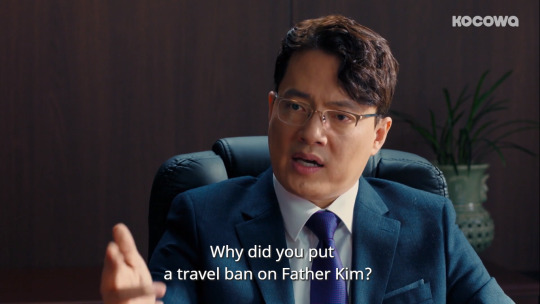


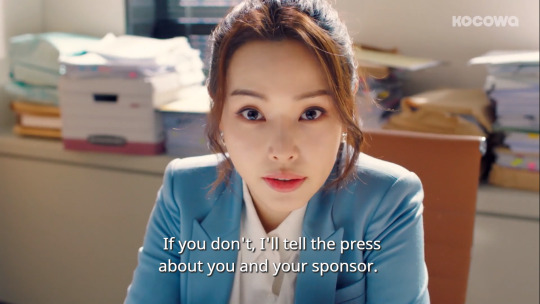
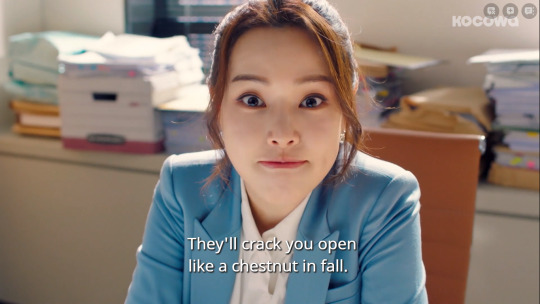




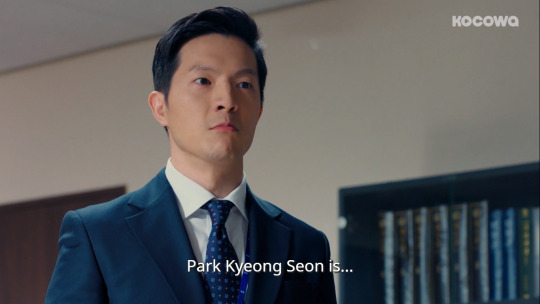


#the fiery priest#non romantic crime kdrama that is absolute delight to watch#prosecutor park#honey honey
276 notes
·
View notes
Note
I just read your take on Kuroko and honestly I am impressed. I don't know if you read the manga, but I have come to notice that he barely has a POV chapter/ panel. Heck, even Riko has more PoV chapters than him or Hyuuga. Reading your posts, I am slowly understanding why. Still, I wonder what would be the manga had we had more of his POV
No, I didn’t read the manga yet. But I think it was a conscious choice by Fujimaki to make Kuroko more “mysterious” and I think Kuroko would lose his charm significantly if we start to see the narrative from Kuroko’s eyes. It’s like reading Sherlock Holmes and seeing Holmes from Watson’s viewpoint. in KnB, people like Hyuuga, Riko and other “normal’ characters are supposed to represent us, and through their eyes we see the extraordinary people of the comic. I would think the narrative of KnB would be surreal if we see from Kuroko’s perspective, but it would also lose of effect of surprise because he is exceptionally sharp in observation, which is above the normal sight
8 notes
·
View notes
Text
KnB Commentary: Kise Ryouta and the Curse of Being “Pretty Boy” in Shonen Anime
Cheerful, extroverted, happy-go-lucky and sunshine with a face, Kise Ryota is the screen ikemen in Kuroko no Basket. Although Kise is a cult favourite, but I think he is sometimes pushed aside with Momoi. In KnB people tend to focus more on the other GoMs rather than Kise. Here is my take on how Kise Ryota’s character and his types are scorned in Shonen Manga.
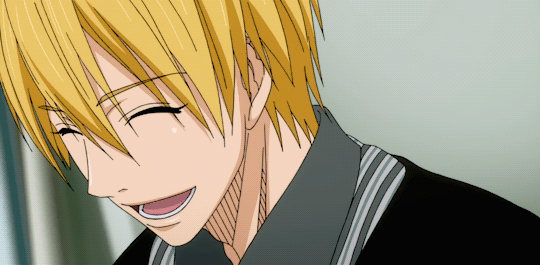
Shonen and Shojo manga revolve around two different dimensions: while shonen manga focuses on friendships, journeys and solid characteristic developments, shojo manga focuses generally on the romance parts, interpersonal relationships, appearance and struggles of the ordinary main character. Both manga lauds ordinariness and makes the ordinary extra-ordinary one just by showing that they have the possibility to be sublime. While Shojo manga greatly appreciates male beauty to the point of worship, Shonen sort of looks down on male beauty: anyone who identifies himself as good looking, or wants to be good looking is put down by others around him. Let’s see how Kise fell into the same trap.
Kise is introduced in the story in a very Shojo manga fashion. He is looked from the female point of view of Seirin’s girl students as he walks down the main pathway of the school. That piece of scene almost reminded me Takumi Usui entering school in Kaichou wa Maid Sama. From that point, wherever he goes he is greeted and surrounded by female population en large, much to the annoyance of his team members and opponents. Similar to the effect of “male gaze”, exists a “female gaze” which supposedly decides the desirability of a boy, especially in a high school setting. Kise, being handsome by the contemporary Japanese standards thus somewhat becomes the focus of the female gaze which makes males around him conscious and equally anxious. This phenomenon can be asserted with Momoi’s first encounter in the anime with Kuroko in Aida Gym pool. When Kuroko is hugged by a very beautiful and buxom Momoi Satsuki, the boys on his team lament: “I am so jealous of you Kuroko, hope you’ll die.” This was from a rather “harmless” and “normal” bunch of High School Basketballers, then just imagine how it effects the powerhouse boys with similar primal instinct and with greater ego. Thus Kise is treated with hot-and-cold attitude from males around him: be its his former teammates or current.

Kise is thus definitely an eligible bachelor and he surely knows it. However his self-awareness is without vanity or narcissistic edge. He is shown to be appreciative of female attention and not portray himself as a “playboy” or a “Scorer”; he is never addressed by anyone as “charan poran” (womanizer) in the series. This is a very contradictory attitude in Shonen anime. In shonen anime Male sexuality have very limited outlets: either one should be hyper-celibate and not pay attention to any organism marked as female, or one could be hyper-sexual to the point where they objectify the female form in a not so respectable manner--there is nothing in the Middle. In KnB Akashi, Kuroko and Midorima fall in the former end of spectrum while Haizaki Shogo and Aomine Daiki fall into the latter. Even dating and having girlfriend can make you the object of male scorn: in the anime Grand Blue, the department of Mechanical Engineer has a secret pact to stay single and when they find out that Iori Kitahara is living with Chisa (who is his cousin), they almost throw a violent fit. The male solidarity in Shonen thus ostricise the males who express appreciation in female company and show interest in courting and romance. Kise is snubbed in a similar manner for showing interest in a more feminine side. A same kind of snubbing was delivered to Hiroshi Fukuda of Seirin when he confessed on the rooftop that he wanted to get into the team for dating someone. In Free Momotarou Mikoshiba too, is either ridiculed or snubbed by his teammates for openly admitting to like Gou Matsuoka.
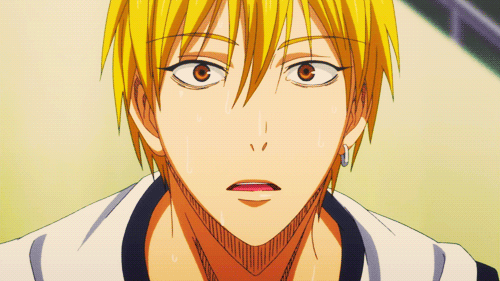
Out of all the Generation of Miracles characters, I think Kise is the most discriminated of all. His discrimination is the unsual kind: he is too important in the plotline to be comic relief like Takao and Izuki and he is too cheerful enough to be the bad boy. So what kind of discrimination does he face? He faces the discrimination for being good looking. Yes, there is a thing to be discriminated for being good looking. I also think Kise has been played within the character of being the “dumb blond”. He is portrayed as “pretty boy” and is expected to limit himself within it. His cheerful attitude is often met with cold shoulder and it is absolutely normalised within the storyline. Unlike other players who greet their rivals outside the courts with a broody attitude and slightly glaring eyes, Kise is the one who advocates “Yesterday’s rivals are today’s friends”. This is a very positive attitude to use in real life to keep the unhealthy competitiveness in check, but it is met with a scorn in the anime. It is shown as if being cheerful is the by-product of being good looking and the former should reflect the latter. This is perhaps the reason Kise’s playing style was completely sniped out of the scene from being “the best of all”. According to the society, a good looking person is just an eye-candy for anyone to drool over and if they have too much agency or talent people enviously comment “(s)he gets all that because of the looks”. It stems from the insecurity of one person having too much social power. The entire thing is very limiting. Kise is not only good-looking, he is acing his modelling career, a field which is highly demanding and taxing and at the same time he is doing well in basketball also in a nationally reputed school. These attributes somewhat gets overshadowed because he is somewhat only identified on screen for his looks. This fact is highlighted with his rivalry with Haizaki Shogo. Haizaki, instead of acknowledging Kise as a player, “marked his territory” by “boning” one of the girls claiming to be Kise’s girlfriend.
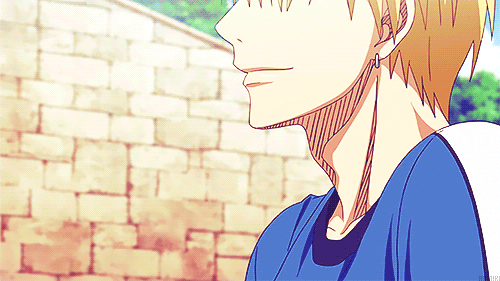
Kise is very much aware of the fact that the swarming bunch of girls are intrinsic to his image, especially as a model and for this reason he tries to be respectful towards them. However, he does not identify the admiration of the fan-brigade with genuine affection. This is the core fact which Haizaki misinterprets about Kise that he derives power from the admiring fangirls. Haizaki despite being the antagonist is pretty much shares the similar prejudice with the people near Kise: that Kise Ryota begins and ends with looks and even his playing style “perfect copy” is less than original. But Kise is not the prejudices that surround him, he is affectionate, loyal and genuine with enough dedication to pursue what he loves. The ideal type of Kise : “a girl that won’t tie me down” says a lot about him. He is eager to meet someone who will respect him for who he actually is and not for his looks or fame. He too is someone who grew out of seeing the surface and judge to observe someone and understand---that is how he started to respect Kuroko at the first place. At the end, when he loses to Touou, he sheds the image of a “cool handsome boy” and cries like a baby in public; something his own captain Kasamatsu or his former teammate Midorima could not do. This shows a lot of courage and strength but also shows that expressing ugly emotions in a public can also be dignified and not necessarily be stripping to masculinity.

Tags
: @sidd-hit-my-butt-ham @yanderebakugo @kurokonbscenarios @kurokonobasket @kurokonoboisket @art-zites @idinaxye @sp-chernobyl @strawbe3ryshortcake @reservethemoon @rilnen @a-shy-potato @thirsthourdemon @animebxxch @edagawasatoru @akawaiishi-blog @reinyrei @chloe-noir @theswahn @ahobaka-trash @jeilliane @trashtoria @scarlettedwardsposts @quirkydarling @ghostieswaifu @levihan-freaks @hope-im-spirited-away @yves0809 @marshiro1101 @bubziles @heartfullofknb @kit-kat57 @akichan-th
#kise ryouta#kise ryōta#kuroko no basket analysis#knb kise#kiseki no sedai#pretty boy#anime stereotypes#anime analysis#let's talk about this#kise deserves better#more than just a pretty face#grand blue#iori kitahara#free#momotarou mikoshiba#kaichou wa maid sama#usui takumi
179 notes
·
View notes
Text
Noragami: Bishamon- the Archetypical Warrior Mother Goddess
Bishamon or Bishamonten from “Seven Gods of Fortune” in Shintoism is the typical “strong woman” trope character in a Shonen anime called Noragami: she is angry, she is beautiful and conveniently buxom for fans to drool over her. Termed by Yato as “ugly broad” Bishamon is fierce and coarse. However, she is not only that: she has a caring and nurturing side which almost caused her demise once and put her in danger over and over again. So this is my take on Bishamon and why she is the Eastern archetype of “Warrior Mother Goddess” instead of her Shinto persona.
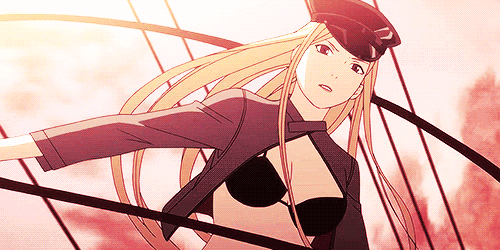
First of all, let’s look what Bishamon actually is in the Classic Shinto religion. In Japan, Bishamonten (毘沙門天), or just Bishamon (毘沙門) is thought of as an armor-clad god of war or warriors and a punisher of evildoers. Bishamon is portrayed holding a spear in one hand and a small pagoda in the other hand, the latter symbolizing the divine treasure house, whose contents he both guards and gives away. His (because Bishamon is a male in Shintoism) legend derives from the Hindu Demigod “Vaisravana” or “Son of Vishrava”, who is known as Kubera the God of wealth. Both Vaisravana and Bishamon are associated with material fortunes and Bishamon is really a fierce version of Vaisravana, a well-fed, content and rather gluttonous demigod.
But how a god like Bishamon gets transferred in Noragami to a woman? It could be a design choice by Adachitoka to create a contrasting female character who could meet Yato in a more Godly plane. But I can see some clear Hindu influence in Bishamon’s design. She is inhumanly beautiful, fierce, perfect body and with rapunzel length hair. Her design is very similar to the Warrior Goddess Durga. In the “Meditation of Durga” she is described as
“the one with great length-ed dreadlocks in her head...whose face is beautiful like the full moon, whose complexion is as fair as flax seed flower...whose beautiful teeth sit on her full lips, whose full breasts hold the elixir of immortality*-- (Meditation of Durga, verse 1-3)
The physical description of Durga has uncanny similarity with Bishamon. the Goddess is also called “nabayouvana sampannang, sarbabharana bhushitang” (who is young and clad with fantastic jewels). Bishamon may be young and beautiful but she does not wear any eastern jewels: she is rather clad with her regalias posed as weapons, navigation and clothes; thus it isn’t far off.
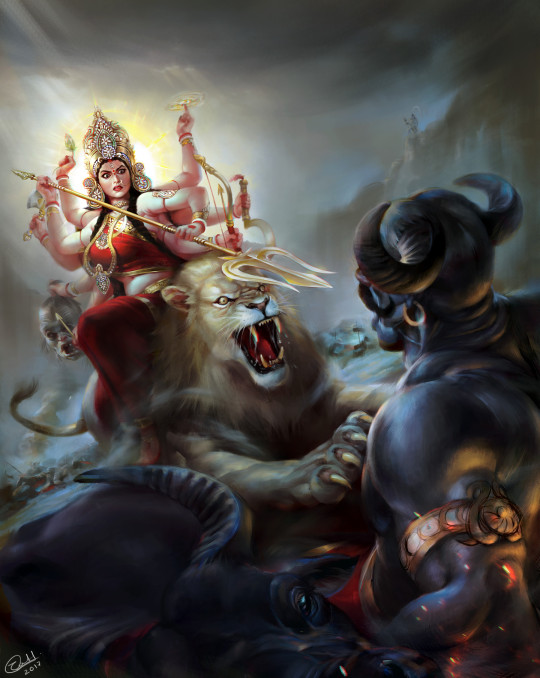
It is not only the superficial physical appearance that are similar with Durga and Bishamon; they also share some character similarities. The traditional Bishamonten is not known to have a mount or Divine Familiar, Bishamon in the anime on the other hand does a divine familiar in the form of mount: Kuraha, who takes the shape of Lion and can travel in the air. This is an iconic similarity with Durga, whose divine mount is a lion. In “hymns of Gandhesvari” Durga (or her Gandhesvari form) is described as “Simhasta” (the one who rides a lion). Durga is also known as “Simha vahini” (she whose vehicle is a lion). The Bishamonten is known to carry only one weapon, a spear, but Bishamon in Noragami has or carries multiple weapons because she has multiple regalia. In the “Meditation of Durga” the goddess is known to carry a goad, bow and arrow, executioner’s sword, discus, conch, mace, shield, rosary and the trident. Bishamon too carries multiple weapons: whip, guns, knife long machete etc, just like Goddess Durga herself. One part of Durga’s weapon is “Aveda barma” or the “impenetrable armour” forged by the ironsmith of the Gods, Vishwakarma (the forger of the universe). Bishamon wears a full blown armour by her regalia Aiha when the Ebisu-crisis occured and she had to journey to underworld.
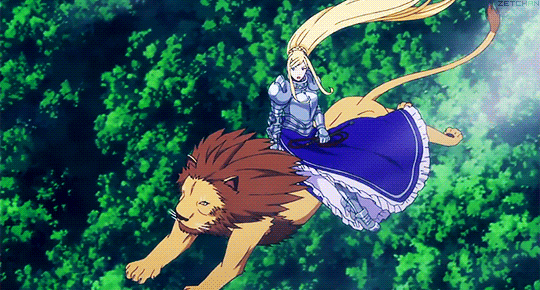
Now, in the parallel of two warrior goddesses who seem to be far from society’s idea of ideal femininity, where does the nurturing part fit? According to the Hindu mythology Durga is only a fragment of the ideal femininity: the rightful rage of “Adi Shakti” (Ancient Energy), the Female mother goddess. (Excuse my jargon) in the “Durga Saptashati” of Rigveda, the Goddess is described as “mother of all creation” (verse no 3) and at the same time she is described as “creator, sustainer and destroyer of the world” (verse no 4) of which she is the Mother. Bishamon has an extensive collection of regalia: she does not discriminate who is weak or who is useful, she takes everyone in as her own according to Noragami Wiki:
“She willingly accepts any wandering and troubled spirit, useful or not, and adds them to her family. “
She and her Shinkis live in Takamagahara which is the universe on its own, so she is the guardian and mother of her Shinkis in a way. Takamagahara is situated in a place which has golden hued galaxy as the backdrop of the sky. The form of Durga which alludes to the primeval Female Goddess is called “Bhuvaneswari” (she, whose body is the universe). The shinkis or regalias derive strength from her divine existence and they exist in a palpable form because of her. It again alludes to “Devi Suktam” (the introduction of the Goddess) where is has been mentioned:
“ I am the Queen of the Universe; I give wealth to those who worship me. I am the all-knowing one and the prime one among the worshippable deities. I enter many bodies as the Soul, taking various forms and with different manifestations, in various ways. ... That one who eats food, who sees, breathes, and hears whatever is said, he does all that only through me (my powers). Those who do not understand me, die. “ --(Devi Suktam, verse 4 & 5)
The sense of being center of the universe has brought a tremendous sense of loss and grief to the goddesses in many occassion. In the myths, when Goddess Parvati (the calm version of Durga) loses her child Ganesha, she assumes her rageful spirit again to destroy the universe that has taken her child from her. Bishamon has faced tremendous sense of loss and grief when she lost her “Ma” clan due to the malefic thoughts of the Shinkis--an action which blighted her tremendously. She too assumes a vengeful spree towards Yato, who allegedly slaughtered her “Ma” clan.
In short Bishamon is a great representation of motherly strength in anime field: the term “mother” often evokes a sense of tenderness, security and comfort, but it has been proven in the ancient myth that bringing life into the world and the sense of protectiveness towards life is the most powerful energy of all: it can make an break everything in existence and when the motherly tenderness is challenged it can manifest in one of the most destructive forces in the world. Thus the “ugly broad” “stern powerhouse” persona is only skin deep. The essence of Bishamon is far greater and more empowering.
* In ancient India, full breasts of a woman, which are swollen with milk was granted as a symbol of motherly power, nourishment and comfort. A woman with moderate breast size or small breast size were considered equally beautiful. In fact talking about sexuality in religious and secular discourses by scholars and sages were acceptable. It has no sexual connotation whatsoever. Please don’t perverse it in any sense.
...
wow that’s a lot, now tags (although I have no evidence that they like Noragami)
: @sidd-hit-my-butt-ham @yanderebakugo @kurokonbscenarios @kurokonobasket @kurokonoboisket @art-zites @idinaxye @sp-chernobyl @strawbe3ryshortcake @reservethemoon @rilnen @a-shy-potato @thirsthourdemon @animebxxch @edagawasatoru @akawaiishi-blog @reinyrei @chloe-noir @theswahn @ahobaka-trash @jeilliane @trashtoria @scarlettedwardsposts @quirkydarling @ghostieswaifu @levihan-freaks @hope-im-spirited-away @yves0809 @marshiro1101 @bubziles @heartfullofknb @kit-kat57 @akichan-th
#bishamon#noragami#ugly broad of noragami#bishamon goddess#shintoism#durga#noragami analysis#feminine narrative#anime analysis#girl power#mother goddess#shintoism rigveda#vedas
76 notes
·
View notes
Text
KnB Commentary: Midorima Shintarou--The Paradox of a Character: An Astro-psychological Analysis
Midorima is perhaps the most compatible character to be discussed with astrology, but I will bring some psychological angles to his analysis as well. Being the favorite character of Fujimaki sensei “to draw” he must have gone through some trials and errors when he was made. But on the surface, he seems like a stereotypical cool megane guy who thinks everyone is beneath him. So why is Midorima the way he is? let’s dive in with Oha-Asa style
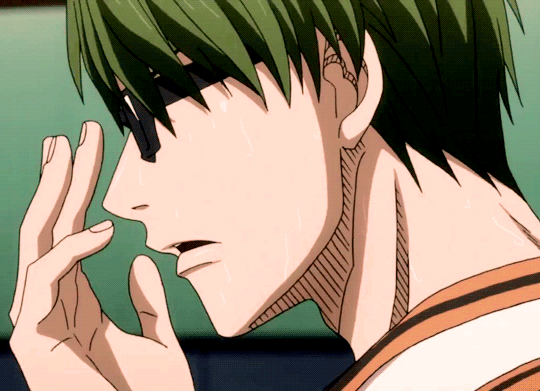
Let’s talk his name first. Midorima’s surname is written with two kanjis: “Midori” (緑) and “Ma” (間). The first one obviously hints at his hair colour and overall color scheme: green, a colour associated with intelligence, fertility, wealth and youth. The latter character means “space” which hints at his playing style: the high arching 3 pointers. So overall, his name indicates an overachiever, perfectionist to the teeth and serious person. If his name was to indicate “Green Space”, then should he not be a visionary and imaginative person, close to Akashi or Kuroko--but he is much controlled than others. Is it a conscious character design choice, a psychological aftermath or something supernatural involved in it?
Both Midorima’s name and playing style are very Jovian in the Astrological sense. Jupiter in Eastern Astrology is the Advisor of the Gods and he signifies Space and expansion of everything good on the physical plane. Thus, he is often called “giver of great wealth, family, children and intelligence”. Jovian people are also big-hearted, generous, affectionate people. Coincidentally, Midorima is a Cancer, a house where Jupiter is exalted. However, Midorima is not a Cancer Jupiter, but Cancer Sun and his sun is placed in Pusya constellation (the Constellation of Nourishment) a constellation ruled by Saturn: the exact opposite of Jupiter in nature. While Jupiter expands everything from wealth to imagination, Saturn limits. Saturn signifies death, discipline, hard work, limitations and coldness. The juxtaposition of expansive style of play with a very controlled character kind of symbolises the conditions of Jupiter’s exaltation in Cancer. Jupiter is not only exalted in Cancer, it is exalted only when it is placed in Pusya, the constellation of Saturn. Space itself has no shape, it is unfathomable and infinite and to make it usable in the terrestrial level, limitation is required. Midorima’s counteracting character and playing style describe exactly that: in fact his controlled demeanor is the reason behind his excellence.
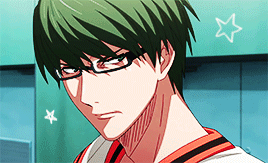
There is a surface dispassion and control on Midorima’s character. He tries to control everything around him: his chances through lucky items, disruptive behaviours of others and other normal things which are really common for teenagers. It’s typical Saturnian quality to restrict and control but why in such an extensive way? I think, deep down Midorima is easily afraid and fear is something he struggles with all the time. Saturn is also the lord of fear, which further feeds into the restriction side of the character. In a type A character like Midorima, who wants everything to be perfect all the time, the fear actually stems from his lack of confidence for not being good enough. He may appear that he is cool and confident, but he is not: he does have an abhorrence towards confrontations and taking things head on and face to face, which also translates well to his playing side: shooting from far. He is always afraid of something being wrong, which also makes him cling to the “lucky items”.

The child-like hoarding habit of lucky item is an adorable quirk in Midorima’a character, whose interpretation can get considerably dark. This sort of “possessiveness” are the result of dysfunctional childhood. In K-project: Return of the The Kings, Saruhiko Fushimi is a character that had dysfunctional childhood which developed into a twisted possessiveness towards his ex-best friend Yata Misaki. Midorima is not nearly as dysfunctional as Fushimi, but things are somewhat apparent. Midorima appears to have a very sheltered childhood, too lavish and sheltered that overlooked his inner insecurities with his outward brilliance. He had doting, perhaps overprotective parents who incubated their brainy child to a sanctuary of order and discipline, thus discouraging and curtailing the caprices of a natural child. This developed a chronic dependency on “lucky items” that are supposed to make the day better, like the toy teddy is supposed to protect from the monster under the bed. It is both comic and pathetic to see Midorima from such an angle: the parenting he has been under must have been overcontrolling disguised as affection. Inshort, Midorima is the less comical version of Handa Seishuu, the young calligrapher from the anime “Barakamon” [both voiced by Daisuke Ono]
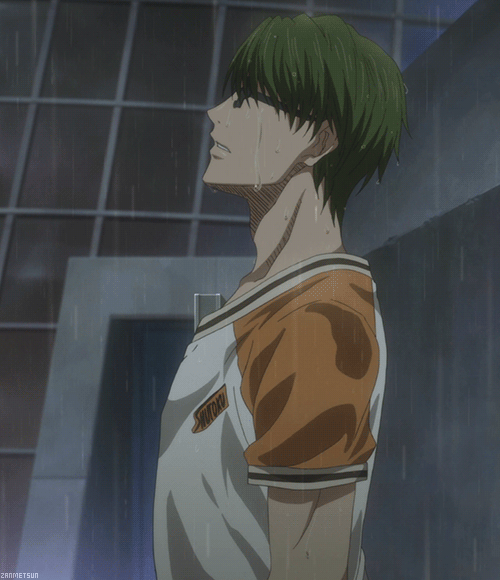
This also hints that Midorima must also be most emotional of all his peers. Japan is very conformist nation and boys are raised in a very specific ways, showing emotions is considered feminine and therefor is frowned upon on men. Kise may appear emotional on the surface because firstly he is very expressive and extroverted, secondly he is heavily impacted by his elder sisters and has healthy feminine impression on his psyche. Midorima on the other hand is a first born boy in a upper-middle class Japanese family and his emotions were in check frequently so that he could be a stalwart guardian for his decade younger sister. While Kise is shown crying in public after losing match to Touou, Midorima cries in private for more than twice. He is either shameful of his outburst of emotions, or he wishes not to show his vulnerable side. The repression of his abundant emotions creates even tougher outer shell that portrays Midorima with a “Higher than thou” outlook. Aside from feminine, he also has very delicate tendancies like “to file” nails instead of “clipping it” which could have been faster and easier, taping nails with slow pace instead of slapping them hurriedly. Although Kise is the model and works in a domain of Art, it is Midorima’s sense of delicacy that comes out in subtle manner.
Tags
: @sidd-hit-my-butt-ham @yanderebakugo @kurokonbscenarios @kurokonobasket @kurokonoboisket @art-zites @idinaxye @sp-chernobyl @strawbe3ryshortcake @reservethemoon @rilnen @a-shy-potato @thirsthourdemon @animebxxch @edagawasatoru @akawaiishi-blog @reinyrei @chloe-noir @theswahn @ahobaka-trash @jeilliane @trashtoria @scarlettedwardsposts @quirkydarling @ghostieswaifu @levihan-freaks @hope-im-spirited-away @yves0809 @marshiro1101 @bubziles @heartfullofknb @kit-kat57 @akichan-th
#kuroko no basket head#kuroko no basket headcanon#kuroko no basket gom#knb midorima#midorima shintaro#midorima shintarou analysis#knb commentary#oha asa#anime psychology
131 notes
·
View notes
Text
Barakamon: The Renovation of the “Manic Pixie Dream Girl”or The Anime Version of Muse
Although it is my first attempt to anything other than Kuroko No Basket, but I hope this rant is reached out to the people who have found this particular anime as inspiring as I have.
Disclaimer: the animes I mentioned below, I don’t hate or despise them. So please don’t come defending that I am bashing them: because I am not. I used them to point out the difference between them and Barakamon

We all know these type of story: a genius male protagonist hits a slump, meets a quirky girl and then comes back to his field fully charged with his creative genius. Most of the time the hero is romantically involved with the heroine, and when the story is nearing resolution either the heroine is conveniently killed off or bonded forever with the hero. Barakamon follows the same bildungsroman pattern. But Barakamon is not like many anime belonging to the same type of story like Nodame Cantabile or Your Lie in April: because it reinvents the heroine from a quirky love interest to a real, living breathing human child: Naru Kotoishi.
Naru's character have always perplexed me. She is a haywire child, nightmare to babysit for any person who is born and brought up in urban propriety, untamed, unfeminine, liberating. She represents the entire untamed naturality of the Gotou island, she is incorruptible hope. While everyone in the island appeared to be laid back and languid, she is the only one who is eccentric and unpredictable. When Handa arrives in the island, he is presented with the the two-faced persona: the out languidity of the island and the turbulent nature of the place that is seasoned dealing with nature’s unpredictability, in the tiny girl’s form.

So how does Naru fall into Handa’s narrative aside from literally barging into his new abode? Naru is actually everything Handa wished he had as a child: unbridled freedom, lack of controlling parents, playful and capricious. Handa was incubated into a controlled environment and molded into the fundamentalist calligrapher. Naru literally appears in a blue t-shirt and shorts with a length of rope coiled at her waist. That’s a wonderful allusion to “Wonder Woman” that was about to enter Handa Sei’s life. At the later episode, when Handa’s mother opposes how the countryside has “corrupted” his son’s refined character, we can also understand how Naru’s influence was a sort of Feminist invasion in the rigid, conservative setup of Calligraphy world. Handa’ s mother who is a good calligrapher isn’t a professional like her husband or son, thus it further proves the point that the field is male heavy space.
At the first episode, when his fundamentalist style was challenged, he lashed out and was forced to retreat. And who he finds facing him face to face? It’s Naru. At first she makes him uncomfortable, anxious and irritated but soon Handa comes to term with the child. Naru in her essence is the other side of artistry that is impulsive, bold and uncontrolled, something which is outside Handa’s comfort zone. In several episodes, Naru is seen spilling ink, tripping on the bottles and smearing ink in clear spaces, like on the hull of the boat where Handa was asked to write by Miwa’s father. This is a great allusion of Art being an uncontrolled living breathing organism which isn't just there to please others with aesthetics; it stirs the souls and transforms. The sudden change in Handa's style, from "well behaved penmanship" to "fuzzy experimental brush strokes" are great example of Naru's influence over him. His words became simpler: "star", "feather", "utmost" "sea bream" and his style became totally eccentric. The last of “Barakamon” ‘s soundtrack is called “People learn from People” I think it actually alludes to Naru in the sense because she is the one who makes Handa face the limits of his art by challenging him physically and mentally.

So how Naru is different from the Manic pixie dream girls of the other similar animes? Both Megumi Noda of Nodame Cantabile and Kaori from Your Lies In April felt like the male fantasy of the slumped, socially awkward hero. Megumi who is outwardly perverted and downright lewd in many places is the caricature of Shinichi Chiaki’s rather prudish behaviour; as a reconciliation both end up as couples. Kaori in “Your Lie in April” is the textbook definition of “Manic Pixie Dream Girl” who is only there to motivate Kosuke Arima and disappear to the Death. Both of the women were musically prodigious and “muse-like” that brings the protagonist out of their roadblock. Both Megumi and Kaori play classical music which are not strictly dictated in the notations, and though it strikes Chiaki and Kosuke, they accept it as their path to sublimate. Naru is neither a prodigy in any artful sense, nor she is a sexual creature (or was seen with any romantic sense by the protagonist). Like any “Manic pixie dream girl” she makes the protagonist break out of his awkward shell through her eccentricity, but she does it with a perilous edge. Handa had to combat with all of his willpower to stand up to her antics in order to grow and mature. In this self-reliance boot-camp, all his previous identities, in the form of magazine articles, interviews and books gets torn out. The torn pages are then flown away as paper aeroplanes by Naru, as a symbolic gesture of “unlearning” in order to “learn” again.
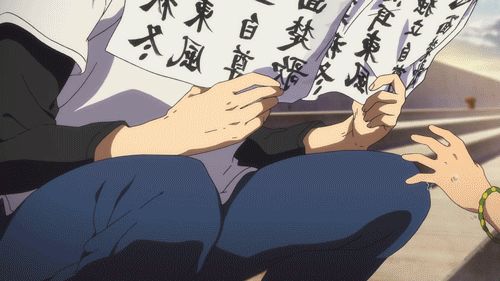
The Muse figures in the other two animes are the comforting image of perfection which heroes of both Nodame Cantabile and Your Lie in April are trying to reach. Shinichi's hurried and capricious playing of Mozart's piano duet "Allegro Con Spirito" and Kosuke's "Twinkle Twinkle 12 variations" are the attempts to touch the perfection of their respective muses. In both anime, Mozart plays a significant role in both animes in symbolizing the “perfect”, the “liberating” and the “sparkling”, something the hero must attain in the course of time. The theme of “reaching” in those animes are so apparent that “is my art/music reaching him/her?” is a quote which appears in almost every episode. Handa on the other hand never tries to "reach" Naru, who is the muse figure. In his struggle to find his “true self” she rather becomes the light of clarity through which he attempts breaks from his fundamentalist shell. In the end, Handa doesn’t become the paramount he had imagined he would; he gets rejected by the highly conformist industry which pushed him back because he was “too fundamental”: that sort of an anti-climatic ending to the Muse and Poet sort of narrative, and that’s where Naru’s significance lie. In art, there is nothing which is “perfect”, actually perfect is the enemy of good. In the end of Barakamon season 1, it is the “Good” that wins: Handa’s satisfaction with the calligraphy of the Doners’ names on wooden plank.
...
wow that’s a lot, now tags (although I have no evidence that they like Barakamon)
: @sidd-hit-my-butt-ham @yanderebakugo @kurokonbscenarios @kurokonobasket @kurokonoboisket @art-zites @idinaxye @sp-chernobyl @strawbe3ryshortcake @reservethemoon @rilnen @a-shy-potato @thirsthourdemon @animebxxch @edagawasatoru @akawaiishi-blog @reinyrei @chloe-noir @theswahn @ahobaka-trash @jeilliane @trashtoria @scarlettedwardsposts @quirkydarling @ghostieswaifu @levihan-freaks @hope-im-spirited-away @yves0809 @marshiro1101 @bubziles @heartfullofknb @kit-kat57 @akichan-th
#barakamon#naru kotoishi#handa seishuu#barakamon anime#manic pixie dream girl#handa and naru#new loli heroine#shigatsu wa kimi no uso#your lie in april#the muse#muse and poet#nodame cantabile#calligraphy#mozart#i made a rant#enjoy my nerdy rant#kosuke arima#kosuke x kaori
95 notes
·
View notes